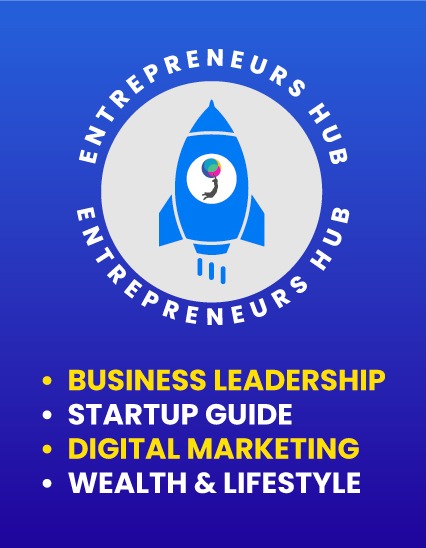Unleash Your Business Potential With a Business Map

3 Critical questions to catapult your business to new heights.
Many new businesses fail due to two common reasons: lack of clarity on what success means to them, and lack of a clear roadmap from their current state (point A) to their desired state (point B). A business map can address both these challenges effectively.
In today’s fast-changing business landscape, traditional business plans are no longer sufficient to navigate the uncertainties brought about by disruptive technologies and unexpected competition. To thrive in this hyper-competitive environment, you need to shift your focus from creating a business plan to crafting a business map. Watch the video below to discover the transformative power of the business map plan, as experienced by a business owner who attended Business Mastery.
Unveiling The Business Map
A business map provides a comprehensive view of your business in terms of roles, responsibilities, and standards. It goes beyond merely setting goals or defining strategies – it offers a deep understanding of what’s working and what’s not in your business, and a roadmap to drive positive changes and achieve greater success.
A business map enables a top-down perspective of how your business functions. It involves introspection on various aspects, including processes, inputs, workflow, your purpose in your industry, and the impact you aspire to create in your community.
A business map can take different forms, such as flowcharts, diagrams, or value stream maps, and can be created using various software tools. The format is less important than the mindset and the questions you ask to develop it, tailored to what works best for your company.
Unleash The Benefits Of a Business Map
Creating a business map goes beyond a typical business action plan. It delves deeper into addressing growth opportunities, sales, and other surface-level issues, while also focusing on the core essence of your business, assigning responsibilities, and defining the standards that determine success.
Keep Your Eyes On The Vision
The ultimate goal of a business map, similar to a business plan, is to enhance effectiveness. However, a business map takes a holistic approach to achieve this goal. It ensures that the big picture of your company remains at the forefront. It not only helps you chart your long-term goals, but also serves as a compass for you and your team to stay aligned with the business vision on a day-to-day basis. Your business map is not just for the growth phases, but for the entire lifespan of your business.
Solve Problems Strategically
You can’t solve problems if you don’t know what they are. Business maps unveil the true state of your company and its underlying challenges. They provide you with the opportunity to step back from daily management tasks and gain a holistic perspective of your business. A business map also involves seeking input from your frontline employees about the challenges they face, providing valuable insights that help you effectively solve problems and make informed decisions.
Align Internal Processes
Business challenges often arise from poorly designed internal processes that result in issues such as high employee turnover, ineffective inventory management, and excessive manual labor. A business map can pinpoint these inefficiencies and help establish best practices to address them, ultimately aiding in business scalability, revenue generation, and overcoming challenges with greater ease.
Enhance Risk Managemen
Business ownership inherently comes with risks, and while some individuals may tolerate risk better than others, it is a constant factor to consider. Risk can either lead to great success or complete failure, as demonstrated by companies like Netflix, Hostess, Converse, and Polaroid. A business map can be a valuable tool in managing and mitigating risk by documenting and managing processes, clarifying employee responsibilities, and ensuring compliance with regulations.
Promote Flexibility
Unlike a rigid business plan, a business map is designed to be flexible, which is crucial in industries that undergo frequent changes and disruptions. A business map allows for agility and adaptability to respond to evolving customer needs, economic shifts, and industry dynamics. Embracing flexibility as a mindset helps foster an innovation culture and facilitates business growth.
Creating a Business Map
Involving key stakeholders is vital when creating a business map. Solicit input from employees and implement their ideas to create a sense of ownership and commitment. Schedule regular meetings to develop and improve the business map, track progress towards goals, and assign team members to specific tasks, such as project management and action plan development. During these meetings, ask critical questions to guide the process.
Defining Your Business
While it may seem obvious to identify the type of business you are in, delving deeper is crucial. Merely stating that you are in the software development, home construction, or professional services industry may not differentiate you from thousands of other companies. A business map can help you connect your business with your passion, which is the driving force behind success.
Take Starbucks, for example. Most people would categorize it as a coffee business. However, founder Howard Schultz saw it differently. He envisioned creating a transitional meeting place between home and work, inspired by his experiences in Italian cafés. Before even considering how to create a business map or plan, Schultz recognized that Starbucks was about creating an experience, not just selling coffee.
When creating a business map, ask yourself and your team what kind of experience you want to create with your business. Is it solely about the products or services, or is there a bigger purpose? Discovering and harnessing your business’s purpose can unlock your vision and drive success on a deeper level, both for yourself and your organization.
The Crucial Question: What Business Am I Truly In?
When it comes to creating a business map, asking yourself, “What business am I really in?” can be a game-changer. This question goes beyond just considering your own company and compels you to think about the entire industry and the people you are serving. By shifting your focus to what truly matters – the customer – you ensure that you are constantly striving to deliver the ultimate customer experience, which is the key to success.
Looking back at the history of the early 1900s, the downfall of railroad companies in the U.S. could have been prevented if they had realized that they were actually in the transportation business, not just the railroad business. This realization would have allowed them to adapt to the emergence of the trucking industry and avert bankruptcy. Creating a business map means framing your business in a way that enables you to see opportunities and threats that might otherwise be overlooked, and ultimately staying ahead of the curve.
It’s common for business owners to develop a strong attachment to their product, but to truly thrive or save a failing business, you must fall in love with your customer, not just your product. Understanding what business you are truly in involves having a deep and thorough understanding of your customer and the value they gain from you. This understanding becomes your X factor, guiding constant and strategic innovation in your industry and your business.
Assessing The Present and Planning For The Future
Asking yourself, “How is my business doing?” while creating a business map is a crucial step towards achieving your overall goals. Once you have a solid grasp on how to consistently offer more value to your customers than anyone else in the market, you are in a better position to assess where your business stands currently and what it will take to reach your desired future state.
Being realistic and honest about the state of your business is essential. Just like the railroads that fell in love with their product and overlooked signs of trouble, you may be seeing your business through “rose-colored glasses” if you are too attached to your product. On the other hand, if you are feeling discouraged and disempowered, you may perceive things to be worse than they actually are. This is why obtaining input from others who can provide objective feedback is a crucial part of creating a business map.
When envisioning how you want your business to be, it’s important to think beyond just revenue, profits, and numbers. Connecting your values and purpose to your business map not only helps you grow and create a better experience for your customers, but it also ensures that you, your partners, and your team members are happy in the workplace. As any successful leader knows, an engaged and connected team is essential for the success of the business.
Using a Business Map To Achieve Sustained Success
The process of creating a business map involves deep introspection that allows you to define what success truly means to you and how to determine when you have achieved it. This clarity empowers you and your employees to stay focused on the defined success and keep fear at bay. A detailed business map provides a clear plan for how you and your team can reach that success, allowing for adjustments along the way to ensure smaller goals are met while staying aligned with the broader vision.
Creating a business map, rather than just a business action plan, requires delving deeply into your business to truly understand what makes it tick. This understanding helps you create a better experience for your customers, team members, and yourself. It provides certainty about what your business needs to grow and allows you to steer your organization in accordance with your vision. Most importantly, it helps you identify the right business to be in to establish your dominance in the market.


















